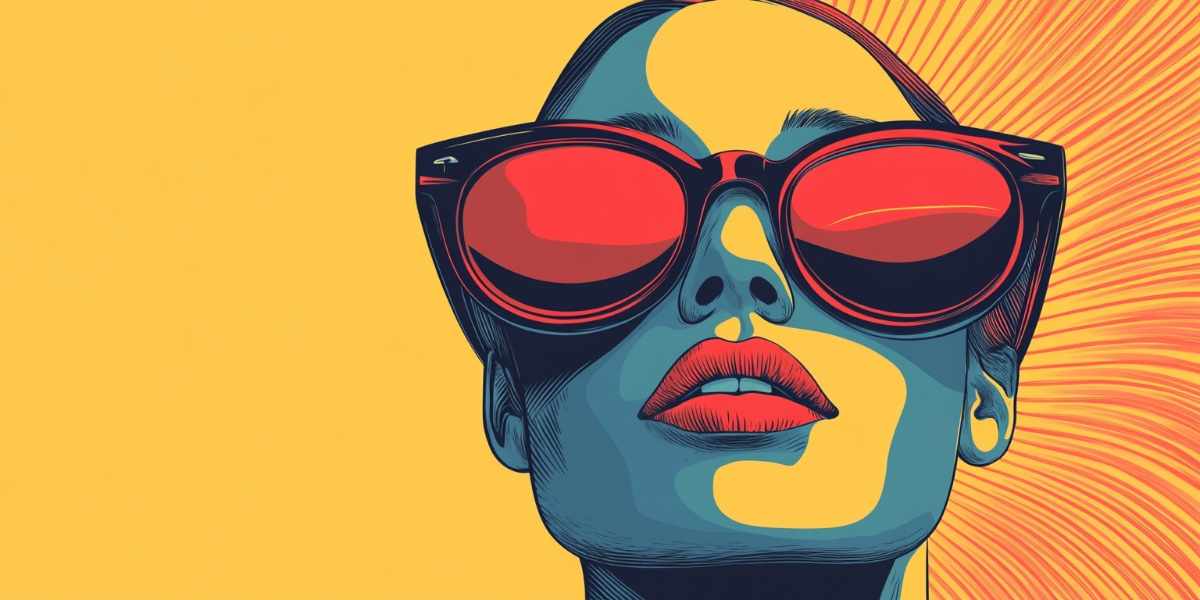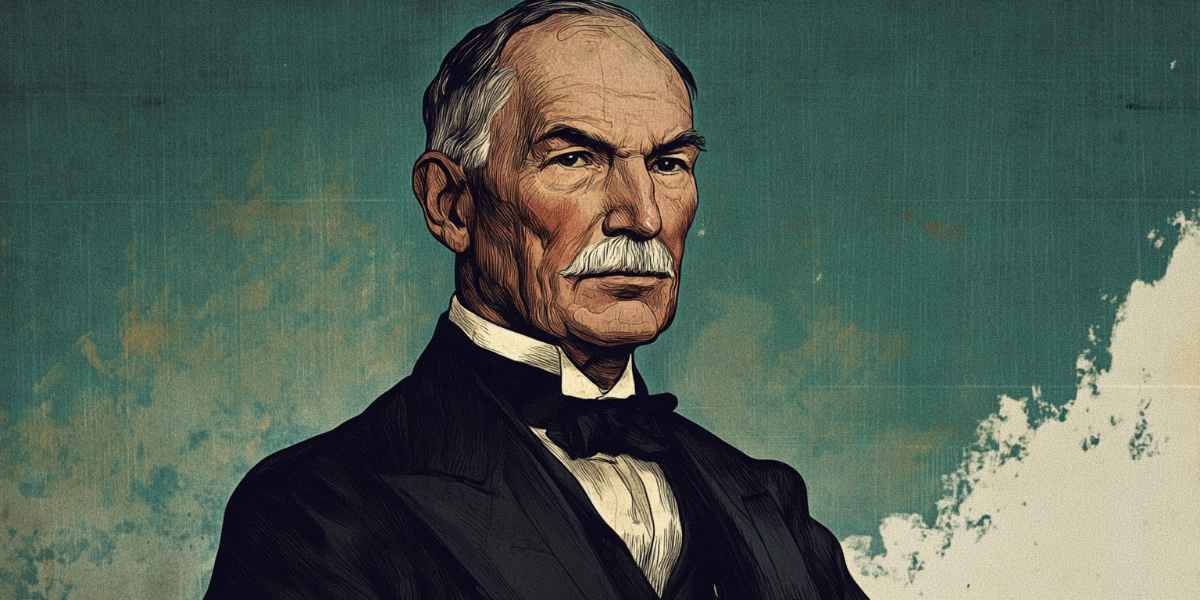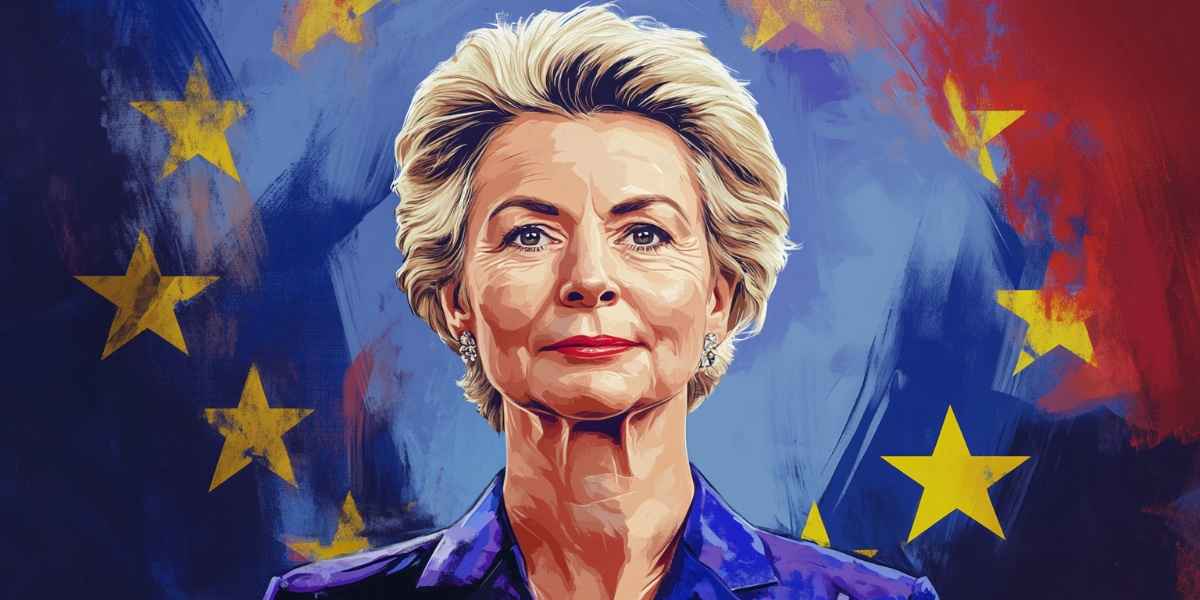The Extraordinary Story of WeWork: Fake It Till You Make It
19 March 2025
The story of WeWork is one of the most striking cautionary tales in modern business. Founded in 2010 by Adam Neumann and Miguel McKelvey, WeWork marketed itself as more than just office space—it promised a lifestyle and sense of community. Investors embraced this vision, driving the company’s valuation to $47 billion by early 2019, despite mounting financial losses and a flawed business model built on long-term leases and short-term clients. When WeWork’s attempted IPO in 2019 revealed deep financial instability and poor governance, the company’s value plummeted, and Neumann was forced to resign. WeWork’s dramatic rise and fall exposed the risks of prioritizing ambitious narratives over financial fundamentals, reshaping the venture capital and coworking industries.
The rise of WeWork
Early beginnings and ambitious vision
WeWork was founded in 2010 by Adam Neumann and Miguel McKelvey in New York City. The idea was to transform the office space market by offering shared work environments tailored to the needs of freelancers, startups, and small businesses. Neumann and McKelvey envisioned a world where work would no longer be tied to cubicles and rigid corporate environments — instead, workspaces would become hubs for creativity, collaboration, and networking.
Neumann’s personal background played a crucial role in shaping his vision. Born in Israel and raised partly on a kibbutz, Neumann developed a deep belief in the power of communal living and working. Kibbutzim were collectivist agricultural communities where resources were shared, and personal wealth was secondary to the collective good. This shaped Neumann’s belief that people could thrive better in shared environments rather than isolated ones. McKelvey, who grew up in a commune in Oregon, shared similar views about the strength of collective communities (The Cult of We, Eliot Brown and Maureen Farrell). This belief in the value of community became the ideological foundation of WeWork.
Before launching WeWork, Neumann and McKelvey tested the concept with a smaller venture called Green Desk in 2008. Green Desk focused on providing eco-friendly coworking spaces in Brooklyn, with an emphasis on sustainability. The spaces were equipped with recycled furniture, energy-efficient lighting, and green roofs. Green Desk quickly gained traction, attracting environmentally conscious startups and freelancers. Neumann and McKelvey eventually sold their stake in Green Desk and used the proceeds to fund the launch of WeWork in 2010.
The core idea behind WeWork was simple but effective: lease large office spaces under long-term contracts, renovate them into stylish, flexible workspaces, and sublease the spaces to clients on short-term agreements. The appeal lay not only in the flexibility but also in the aesthetics — WeWork spaces were designed with exposed brick walls, trendy furniture, and abundant natural light, creating a modern, laid-back atmosphere. It wasn’t just about renting office space; it was about selling a lifestyle.
WeWork’s first location opened in New York’s SoHo district in 2010. The space was designed to create a sense of community and collaboration, with shared kitchens, communal areas, and an open floor plan. The company charged clients monthly membership fees rather than traditional leases, allowing greater flexibility for small businesses and freelancers. The concept was an immediate success, attracting a diverse mix of startups, freelancers, and creative professionals.
The power of community branding
From the beginning, Neumann positioned WeWork as more than just a real estate company. He described it as a “community company” that would transform how people worked and lived. WeWork’s mission was to “elevate the world’s consciousness” — an abstract but emotionally compelling promise that helped differentiate it from traditional office providers.
Neumann’s charismatic leadership style played a crucial role in building WeWork’s brand. He had an uncanny ability to inspire investors and clients with grandiose statements about how WeWork would become as influential as Google, Apple, and Amazon. Neumann claimed that WeWork wasn’t just about office space — it was about reshaping human interaction and redefining capitalism itself. He often described WeWork as a “capitalist kibbutz” — a nod to his Israeli upbringing — where shared resources and collective action would create new economic and social value (WeWork IPO filing, 2019).
WeWork leaned heavily into the idea of creating a sense of belonging. The company organized networking events, happy hours, and wellness programs to foster a sense of community among its members. Membership wasn’t just about office space — it was about being part of an exclusive club of forward-thinking entrepreneurs and creatives.
Early investor interest
Investors were captivated by Neumann’s vision. Early funding rounds were highly successful, with WeWork raising $17 million in Series A funding in 2012. The company’s valuation increased rapidly as more investors sought to get in on the action. Benchmark Capital led a $40 million Series B round in 2013, followed by a $150 million Series C round in 2014.
By 2015, WeWork was valued at $10 billion — a staggering number for a company that had yet to turn a profit (The Cult of We, Eliot Brown and Maureen Farrell). Investors justified the high valuation by pointing to WeWork’s rapid revenue growth and its potential to disrupt the commercial real estate market. The company’s flexible lease model was seen as a game-changer in an industry dominated by traditional long-term leases.
Aggressive expansion
Flush with cash, WeWork began expanding aggressively. The company opened new locations in major cities across the United States and soon extended its reach to Europe, Asia, and South America. WeWork’s flexible lease model was particularly appealing to startups and small businesses looking to avoid the costs and risks of traditional long-term office leases.
The company also attracted major corporate clients, including IBM, Microsoft, and Salesforce, which began renting WeWork spaces for satellite offices and project teams. This corporate interest lent credibility to WeWork’s business model and reinforced the perception that WeWork was more than just a startup-focused company.
Between 2016 and 2018, WeWork’s growth accelerated dramatically. The company’s valuation skyrocketed to $47 billion after Japanese conglomerate SoftBank, led by CEO Masayoshi Son, invested $4.4 billion in 2018. Son reportedly encouraged Neumann to “think bigger,” fueling even more ambitious expansion plans (The Cult of We, Eliot Brown and Maureen Farrell).
WeWork began acquiring other companies and expanding into new business areas. It launched WeLive, a communal living concept where tenants would live in shared apartments with access to WeWork-style amenities. WeGrow, an experimental school co-founded by Neumann’s wife, Rebekah Paltrow Neumann, aimed to redefine education with a focus on creativity and personal growth. Neumann even floated the idea of establishing a WeWork colony on Mars (The Cult of We, Eliot Brown and Maureen Farrell).
The illusion of profitability
Despite rapid revenue growth, WeWork was bleeding cash at an alarming rate. The company’s revenue reached $1.8 billion in 2018, but its losses totaled $1.9 billion. WeWork’s business model — leasing long-term and subletting short-term — created a structural mismatch that made profitability almost impossible.
WeWork spent heavily on renovations, staffing, and marketing. It offered generous financial incentives to attract new tenants, further driving up costs. Neumann insisted that profitability was not the goal — growth was. He argued that WeWork was following the “Amazon model” of prioritizing market dominance over immediate profits. But while Amazon benefited from scale and technological infrastructure, WeWork was fundamentally a real estate company with none of the same competitive advantages.
Leadership and culture issues
As financial pressures mounted, attention turned to Neumann’s leadership style and personal conduct. Reports emerged of Neumann’s lavish lifestyle, including the use of private jets, luxury properties, and expensive parties. Neumann allegedly mixed business with personal spending, once charging WeWork $60 million for a private Gulfstream G650 jet (The Cult of We, Eliot Brown and Maureen Farrell).
Neumann also consolidated control over the company through a special share structure that gave him enhanced voting power. His erratic decision-making raised concerns among investors. He proposed expanding into elementary schools, residential living, and even the marijuana industry. At one point, Neumann suggested banning meat from WeWork offices to reduce the company’s environmental footprint — but later backtracked after employee backlash (WeWork’s IPO Fiasco, Andrew Ross Sorkin).
Neumann’s wife, Rebekah, wielded significant influence over the company’s direction. She played a leading role in developing WeGrow and reportedly influenced hiring decisions based on personal criteria rather than qualifications (The Cult of We, Eliot Brown and Maureen Farrell).
The unraveling of WeWork
The failed IPO
By 2019, WeWork was preparing for one of the most anticipated initial public offerings (IPO) in recent memory. The company’s private valuation had reached $47 billion after a series of investments led by SoftBank. Adam Neumann and WeWork’s executive team were confident that the IPO would be a resounding success, allowing the company to raise billions of dollars in additional capital to fund further expansion.
However, when WeWork’s IPO prospectus (known as the S-1 filing) was made public in August 2019, it triggered immediate skepticism and concern. The document revealed that WeWork was hemorrhaging money at an alarming rate. In the first half of 2019 alone, the company had lost $1.25 billion on revenue of $1.54 billion (WeWork IPO filing, 2019).
Beyond the financial losses, the S-1 filing exposed serious governance issues and conflicts of interest. Adam Neumann’s personal conduct was heavily scrutinized. He had trademarked the term “We” and charged WeWork $5.9 million for the rights to use it — though he later returned the money after public backlash (WeWork IPO filing, 2019). Neumann also maintained tight control over the company through a special class of shares that gave him 20 votes per share, allowing him to retain control even if his personal stake was significantly reduced.
The filing also revealed that Neumann had taken out over $700 million in loans against his WeWork stock and sold large amounts of shares before the IPO. This raised concerns that Neumann was more interested in extracting personal wealth from WeWork than ensuring its long-term success (The Cult of We, Eliot Brown and Maureen Farrell).
Investors balked at WeWork’s lack of a clear path to profitability. While WeWork presented itself as a tech company, analysts pointed out that its business model was essentially real estate — and the real estate sector had much lower profit margins than the tech sector.
The IPO was postponed indefinitely as WeWork’s valuation plummeted. Within weeks, the company’s valuation had dropped from $47 billion to below $10 billion (WeWork’s IPO Fiasco, Andrew Ross Sorkin).
Neumann’s downfall
The failed IPO was a humiliating blow for Adam Neumann, whose personal behavior became a major liability for the company. Reports emerged of Neumann’s erratic leadership style and unconventional behavior. He allegedly consumed marijuana on the company’s private jet during an international trip and frequently held staff meetings that resembled cult gatherings, complete with chanting and motivational speeches (The Cult of We, Eliot Brown and Maureen Farrell).
Neumann’s lavish lifestyle became a source of resentment among WeWork employees, especially as the company’s financial struggles became apparent. He owned multiple luxury properties, including a $21 million mansion in the Hamptons, a $35 million estate in San Francisco, and a $13 million home in the trendy Greenwich Village neighborhood in Manhattan. He also purchased a $60 million Gulfstream G650 jet for personal use — all while the company was losing billions of dollars (The Cult of We, Eliot Brown and Maureen Farrell).
SoftBank, which had invested over $10 billion in WeWork, lost confidence in Neumann’s leadership. Masayoshi Son, SoftBank’s CEO, had initially encouraged Neumann’s aggressive expansion plans, but the failed IPO forced a reckoning. Under pressure from SoftBank and WeWork’s board, Neumann was forced to step down as CEO in September 2019.
As part of his exit package, Neumann was granted nearly $1.7 billion in stock, cash, and credit facilities — an extraordinary sum for a CEO whose company had just imploded (The Cult of We, Eliot Brown and Maureen Farrell).
The SoftBank bailout
After Neumann’s departure, WeWork was on the verge of bankruptcy. The company’s cash reserves were nearly depleted, and it was facing massive lease obligations with little hope of profitability in the near term. SoftBank stepped in with a $9.5 billion rescue package in October 2019, acquiring an 80% stake in the company.
SoftBank’s bailout came with significant strings attached. Masayoshi Son installed new leadership and pushed for a more conservative growth strategy. WeWork’s new CEO, Sandeep Mathrani, was tasked with stabilizing the company and cutting costs. Mathrani had a background in commercial real estate and was seen as a more pragmatic and disciplined leader than Neumann (The Cult of We, Eliot Brown and Maureen Farrell).
Mathrani immediately began renegotiating lease agreements with landlords and cutting underperforming locations. WeWork laid off thousands of employees and scaled back its international expansion plans. The company also abandoned non-core ventures like WeLive and WeGrow, focusing solely on its core coworking business.
COVID-19 and new challenges
Just as WeWork was beginning to recover from its failed IPO, the COVID-19 pandemic dealt another blow to the company. The global shift to remote work in 2020 created an existential crisis for WeWork’s business model. Office spaces stood empty as companies and freelancers adapted to working from home.
WeWork’s revenue plummeted in 2020 as tenants canceled or reduced their memberships. The company was forced to close several locations and renegotiate lease agreements to avoid default.
However, the pandemic also created opportunities for WeWork to pivot its business model. As companies embraced hybrid work arrangements, WeWork began marketing itself as a provider of flexible office solutions for large corporations. The company introduced new products like “WeWork On Demand,” which allowed clients to rent desks and office spaces on an hourly or daily basis, and “WeWork All Access,” which provided global access to WeWork locations.
WeWork’s second IPO attempt
In October 2021, WeWork went public through a merger with a special purpose acquisition company (SPAC) called BowX Acquisition Corp. The deal valued WeWork at $9 billion — a fraction of its peak valuation of $47 billion but still a significant recovery from its 2019 collapse.
WeWork’s public debut was more subdued than its original IPO plans, but the company presented itself as a more disciplined and focused business. Under Mathrani’s leadership, WeWork had significantly reduced its operating losses and streamlined its business model.
WeWork’s strategy shifted toward attracting corporate clients rather than freelancers and startups. Large companies like Google and Microsoft signed deals with WeWork to provide flexible workspaces for their employees. This shift helped stabilize WeWork’s cash flow and improve its financial outlook (The Cult of We, Eliot Brown and Maureen Farrell).
The legacy of WeWork
A case study in startup excess
WeWork’s story became a cautionary tale about the dangers of overvaluing growth and disregarding financial fundamentals. Adam Neumann’s charismatic leadership and visionary rhetoric allowed WeWork to attract billions of dollars in investment despite persistent financial losses and an unsustainable business model.
Neumann’s ability to sell a vision rather than a business was both his greatest strength and his ultimate downfall. Investors were seduced by the idea that WeWork was a tech company rather than a real estate business — an illusion that collapsed once WeWork’s financials were made public.
Impact on the coworking industry
Despite its dramatic collapse, WeWork fundamentally changed the coworking industry. The company’s focus on flexible leases and community-driven workspaces set a new standard for commercial real estate. Major real estate companies like Regus and CBRE adapted their business models to offer similar flexible office solutions.
WeWork’s rise and fall also influenced investor behavior. The excessive valuations and reckless spending seen in the WeWork saga made investors more cautious about future startups with unproven business models.
Adam Neumann’s legacy
Adam Neumann’s personal legacy remains controversial. While he successfully built one of the most influential companies of the 2010s, his mismanagement and personal excesses led to WeWork’s downfall. Neumann walked away from WeWork with nearly $1.7 billion, even as thousands of employees lost their jobs and investors suffered massive losses.
Neumann has since attempted to rehabilitate his image. In 2022, he launched a new startup called Flow, focused on creating flexible housing solutions. Once again, Neumann has pitched Flow as a revolutionary solution to societal problems — raising questions about whether he has truly learned from WeWork’s mistakes (The Cult of We, Eliot Brown and Maureen Farrell).
WeWork’s extraordinary story serves as a reminder that hype and charisma can only carry a company so far. In the end, business fundamentals matter — and no amount of visionary rhetoric can replace a sustainable business model.
WeWork’s restructuring and ongoing challenges
Financial restructuring and debt reduction
After its public listing through the SPAC merger, WeWork continued to face significant financial challenges. Despite cutting costs and closing underperforming locations, the company was still burdened by massive lease obligations and a business model that had yet to turn a profit. By the end of 2022, WeWork’s total debt had climbed to over $3 billion, with operating losses still exceeding $1 billion per year (WeWork’s Latest Financial Report, 2022).
To address these issues, WeWork undertook a major financial restructuring in early 2023. The company renegotiated lease agreements with landlords, securing lower rents and more flexible terms. In some cases, WeWork exited leases altogether, abandoning office spaces that were unlikely to generate profit. According to WeWork’s quarterly financial reports, the company successfully reduced its fixed lease obligations by over 15% by mid-2023 (WeWork Financial Report, 2023).
SoftBank also stepped in once again, providing additional financial support to keep WeWork afloat. This time, however, SoftBank imposed stricter conditions. The company’s board was restructured, giving SoftBank greater control over WeWork’s strategic decisions. Masayoshi Son remained personally invested in the company’s success, though his initial enthusiasm had clearly diminished (SoftBank and WeWork: A Troubled Partnership, 2023).
Leadership changes and corporate culture overhaul
In early 2023, Sandeep Mathrani stepped down as CEO after overseeing the initial phase of WeWork’s recovery. His tenure was marked by a shift from aggressive expansion to cautious cost-cutting and operational efficiency. Mathrani’s departure raised concerns about WeWork’s future stability, but the company quickly appointed David Tolley, a veteran corporate restructuring expert, as interim CEO (WeWork’s New Leadership, 2023).
Under Tolley’s leadership, WeWork implemented significant cultural changes. The company distanced itself from the extravagant and cult-like atmosphere that defined Adam Neumann’s leadership. Employee perks were scaled back, executive salaries were reduced, and internal communication became more focused on operational performance rather than visionary rhetoric.
WeWork also launched internal training programs aimed at improving management accountability and operational discipline. A new performance-based compensation structure was introduced for senior executives, tying bonuses and stock awards to specific financial targets and cost-saving goals (WeWork Corporate Report, 2023).
Shift toward enterprise clients and hybrid work solutions
One of the most significant strategic shifts under the new leadership was WeWork’s increased focus on enterprise clients. During Adam Neumann’s tenure, WeWork had positioned itself primarily as a provider of flexible office space for startups and freelancers. However, by 2023, the market for small-business coworking had shrunk due to the rise of remote work and economic uncertainty.
WeWork began targeting large corporate clients, offering flexible office solutions tailored to hybrid work models. Major companies like Google, Microsoft, and Salesforce signed multi-year agreements with WeWork to provide flexible office space for their employees (WeWork’s Enterprise Strategy, 2023).
WeWork also introduced a new suite of hybrid work products, including:
- WeWork On Demand – An app-based platform that allowed users to book desks or office space on an hourly or daily basis.
- WeWork All Access – A subscription model allowing companies to provide their employees with access to WeWork locations worldwide.
- WeWork Workplace – A software platform that allowed companies to manage and coordinate their use of WeWork office space, optimizing occupancy and reducing real estate costs.
These new products were designed to align WeWork’s business model with the post-pandemic shift toward hybrid work. By the end of 2023, WeWork reported that over 50% of its revenue came from enterprise clients rather than individual freelancers and startups (WeWork Financial Report, 2023).
Legal issues and lingering liabilities
WeWork’s rapid expansion under Adam Neumann left behind a trail of legal disputes and financial liabilities. Several former landlords sued the company for breach of contract after WeWork exited long-term leases. The company also faced class-action lawsuits from former employees who alleged that they were unfairly terminated during the mass layoffs following the failed IPO (WeWork Legal Troubles, 2023).
In addition, Adam Neumann himself became the subject of legal scrutiny. Shareholders accused Neumann of misrepresenting WeWork’s financial health and using insider information to sell his shares at inflated prices before the IPO collapse (The Cult of We, Eliot Brown and Maureen Farrell). Neumann denied the allegations and reached a private settlement with several plaintiffs in late 2023.
WeWork also faced regulatory scrutiny over its accounting practices and financial disclosures. The U.S. Securities and Exchange Commission (SEC) launched an investigation into whether WeWork’s financial statements prior to the IPO had misled investors. While no formal charges were filed, WeWork agreed to pay a $25 million settlement to resolve the matter in early 2024 (WeWork’s SEC Settlement, 2024).
The current state of WeWork
Financial outlook and profitability challenges
By 2025, WeWork had significantly reduced its operating losses and stabilized its cash flow, but the company remained unprofitable. Revenue growth slowed as the global economy faced headwinds, and the commercial real estate market struggled with declining demand due to the ongoing shift toward remote work.
WeWork’s total debt remained over $2 billion, and the company faced mounting pressure to deliver profitability. David Tolley outlined a strategic plan focused on three key priorities:
1. Further cost-cutting – WeWork continued to reduce operating expenses by closing underperforming locations and renegotiating lease terms.
2. Expansion in emerging markets – WeWork identified Asia and the Middle East as growth markets where demand for flexible office space remained strong.
3. Technology-driven optimization – WeWork invested in AI-based occupancy management tools to increase the efficiency of its office spaces and reduce vacancy rates.
Despite these efforts, analysts remained skeptical about WeWork’s long-term prospects. The company’s core business model—leasing office space long-term and renting it short-term—was inherently risky, particularly in an environment where remote work had permanently reshaped the commercial real estate landscape (WeWork’s Financial Future, 2025).
Adam Neumann’s comeback attempt
Adam Neumann’s departure from WeWork did not mark the end of his business ambitions. In 2022, Neumann launched Flow, a real estate startup focused on developing flexible residential communities. Flow positioned itself as a solution to the U.S. housing crisis, offering short-term and long-term leases with a focus on creating communal living spaces.
Flow quickly attracted significant investment, including $350 million from Andreessen Horowitz, one of Silicon Valley’s leading venture capital firms (Adam Neumann’s New Venture, 2022). Despite his controversial history, Neumann managed to persuade investors that his vision for residential real estate would succeed where WeWork had failed.
Flow’s business model, however, faced similar structural challenges to WeWork’s. The company relied on securing long-term real estate assets and generating revenue through short-term leases—a strategy that required significant upfront capital and was vulnerable to economic downturns (Adam Neumann’s New Venture, 2022).
The legacy of WeWork
WeWork’s story remains one of the most extraordinary cautionary tales in modern business history. It exposed the dangers of overvaluing vision over execution and highlighted the fragile foundation of the venture capital model that prioritized growth at all costs.
Adam Neumann’s rise and fall reflected broader trends in Silicon Valley, where charismatic founders were often elevated to cult-like status despite weak business fundamentals. WeWork’s collapse forced a reckoning among investors, who became more cautious about backing startups with unclear paths to profitability (The Cult of We, Eliot Brown and Maureen Farrell).
WeWork also left a lasting impact on the commercial real estate market. The demand for flexible office solutions that WeWork helped pioneer remains strong, even as the company itself struggles to survive. Competitors like Regus and Industrious have adopted elements of WeWork’s business model, creating a more competitive and diversified coworking market.
WeWork’s ultimate fate remains uncertain. While the company has survived its near-collapse, its ability to achieve sustainable profitability remains an open question. What is clear, however, is that WeWork’s story—of ambition, excess, and the limits of the “fake it till you make it” mentality—will be studied in business schools for decades to come.










